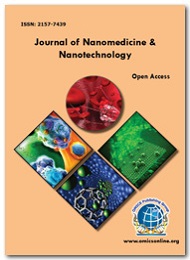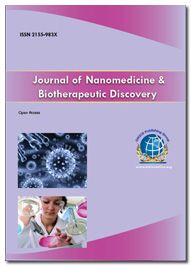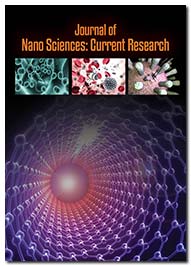Theme: Latest Technologies and Innovative Concepts in the Field of Nanotechnology
EURO Nanomat 2019
- Euro Nanomat 2019
- Conference Sessions/Tracks
- Who should attend
- Why to attend
- Invitation Letter
- Nanotechnology Market Analysis
- Importance and scope
The Conference Series LLC Ltd organizes conferences around the world on all medical subjects including Nanotechnology and its related fields. Here we are happy to invite all nanotechnology / industrialists/ students to join our "32nd International Conference on Nanoscience, Nanotechnology and Nanoengineering" scheduled to be held in Rome, Italy during November 18-19, 2019. The Euro Nanomat 2019 is initiated by Editors of Journal of Nanosciences: Current Research: Open Access, Journal of Nanomaterials & Molecular Nanotechnology: Open Access, and Journal of Nanomedicine & Nanotechnology: Open Access.
Details of Euro Nanomat 2019, Rome, Italy
|
Conference Name |
Place |
Date |
|
Rome, Italy |
November 18-19, 2019 |
Nanoscience is the study of atoms, molecules, and objects whose size is on the nanometer scale. Atoms are a few tenths of a manometer in diameter and molecules are typically a few nanometres in size. Nano Science is a technology directed at the Nano scale. It is the uses and study related to very small things that can be used in all the other fields of science like biology, physics, chemistry, engineering and Materials sciences.
Nanorobotics and Nanomanipulation
Energy Conversion and Storage
Food, Smart Agriculture, and Medicine
Nanotechnology in Water Purification
Smart Textiles and Apparels
Optical Nanoscopy
Optical Nanoscopy
Emerging Trends in Nanotechnology
Realization of molecular sized machines. Remote sensing through nano Unmanned Aerial Vehicles and satellites.
2. Future Challenges in Nanotechnology
The Nano is the highest building block for healthcare, structural material, in electronics, automation, etc., and will become the platform for new cutting edge technologies to grow for the better living of mankind. Nanotechnology is fast gaining traction across a range of industries, from agriculture to water treatment to energy storage. Today, nanotechnology is one of the most advanced, cutting-edge areas of scientific study and it continues to advance at staggering rates. From scientists at technology-focused companies and institutions to students pursuing a nanotechnology degree, leaders in nanotechnology are creating the latest innovations in this field.
Reproducible mass production at kilogram levels of identical high quality CNT
Development of self-sustaining, self-replicating hybrids of CNT and silicon to perform augmentation and repair of DNA
Development of intelligent wearable systems using nano technology. Solution to cancer, Parkinson’s disease and AIDS through biosensors, devices and drug delivery systems.
Realization of molecular sized machines. Remote sensing through nano Unmanned Aerial Vehicles and satellites.
3. Materials Science and Engineering
For the development of mankind, Materials sciences have played a key role. Materials Science and Engineering (MSE) is an integrative field of science and engineering which inspects how variations in the structure of a material impact its properties. This field comprises of chemical, biomedical, mechanical, electrical, aerospace engineering, civil, physics and chemistry. Materials scientists and engineers improve materials for new applications, expand existing materials to reinforce interpretation and estimate ways in which diverse materials can be used along. Materials-related spectacles and strategies like investigatory and analytical techniques, materials degradation, surfaces and interfaces, failure investigation and nondestructive analysis. It is a discipline that supports both the design and application of materials in society.
Carbon nano structures and devices
Biomimetic materials
Fiber, films and membranes
Scientific and business achivements
Carbon nano structures and devices
Fiber, films and membranes
Scientific and business achivements
Tribology
Emerging materials and applications
Platform for comprehensive projects
Global materials science market
Teaching and technology transfer in materials science
Products and services
Graphene
Nanoengineering is the practice of engineering on the nanoscale. It derives its name from the nanometre, a unit of measurement equalling one billionth of a meter. Nanoengineering is largely a synonym for nanotechnology, but emphasizes the engineering rather than the pure science aspects of the field.
Risks of nanotechnology
Applications of nanotechnology
Devices
Notable figures in nanotechnology
Nanophotonics or nano-optics is the study of the manners of light on the nanometer scale and of the communication of nanometer-scale substances with light. It is a division of optics, electrical engineering, optical engineering and nanotechnology. It repeatedly comprises metallic components, which can conveyance and emphasis light through surface plasmon polaritons. Nanophotonics is the novel evolving hypothesis where light cooperates with nano-scaled structures and fetches onward the secretive world to research. The amalgamation of Photonics and Nanotechnology giving delivery to “Nanophotonics” salutates and welfares each other in rapports of innovative functions, materials, fabrication processes and applications. The study of light at the nanometer-scale is nanophotonics and plasmonics. Light can individually be engrossed to advert unevenly half its wavelength in size which is a few hundred nanometers for visible light. This boundary can be exceeded by pairing light to electrons at the surface of a metal and generating surface plasmons.
Optoelectronics and Microelectronics
Amplifiers and Isolator
Electro-optic Modulators
Solar Cells
Nanochemistry is a new discipline concerned with the unique properties associated with assemblies of atoms or molecules on a scale between that of the individual building blocks and the bulk material. Nanochemistry is the use of synthetic chemistry to make nanoscale building blocks of desired shape, size, composition and surface structure, charge and functionality with an optional target to control self-assembly of these building blocks at various scale-lengths.
Nanochemistry in Chemical sensors
Neurochemistry
Green Nano chemistry
Nano pharmaceutical chemistry
Nanotoxicology is study of the nature and mechanism of toxic effects of nanoparticles on living organisms and other biological systems. It also deals with the quantitative assessment of the severity and occurrence of nanotoxic effects relative to the exposure of the organisms. Human exposure routes are mainly mediated through inhalation, dermal, oral intake or by injection. The small particle size and the shape of nanomaterial allows to uptake into blood and lymph circulation and circulation to tissues in the body that normally are protected by barriers, such as the brain by penetration of the blood-brain-barrier (BBB).
Lipid Nanotechnology
Biomolecular Engineering
Cardiac therapy
Cardiac therapy
8. Nanoelectronics and Biomedical Devices
The fast development of the Nanodevices is driving the world through the roadways of improvement in different sections of science and innovation. The Nano devices &Nano frameworks have brought a colossal change of mankind with its Nano way of life gadgets. The examination includes in brilliant sensors and savvy conveyance frameworks, demonstrating and reproduction alongside the organically enlivened gadgets which are expected to move at a gigantic development of 34% CAGR and the anticipated development of the Nano switches and Optical-biosensors is up to $58.9% billion increment before the end of 2018 by enrolling a sound CAGR of 20.7%.Around the world making the world's focus the exploration territories of Nanomaterials and Nanotechnology.
Nanorobotics and nanomanufacturing
Nano-Optics
Spintronics
Emerging device challenges in futuristic nanoelectronics
Nanodiamond devices
Microfluidics & Microfabrication
Nano MEMS
9. Nano Biotechnology
Nanobiotechnology, bionanotechnology, and nanobiology are terms that refer to the intersection of nanotechnology and biology. Given that the subject is one that has only emerged very recently, bionanotechnology and nanobiotechnology serve as blanket terms for various related technologies.
Bioluminescent magnetic nanoparticles
Surface modified polystyrene nanoparticles
Nano systems
Disease diagnosis
Target specific drug delivery
Nano ink
10. Pharmaceutical Nanotechnology
The field of pharmaceutical nanotechnology provides an insights into the study of synthesis, characterisation and diagnostic application of materials at the nanoscale. The particular interest within the field is synthesis, characterisation, biological evaluation, clinical testing and toxicological assessment of nanomaterials as drugs for various diseases.Nanotechnology is the science which deals with the processes that occur at molecular level and of nanolength scale size.
The major studies in the nanotechnology include nanosized particles, their function and behaviour with respect to other systems. The tremendous capabilities of nanoparticles have changed the perspective and scope of nanotechnology towards development into an adjuvant field for the remaining fields of life sciences.
Nanoliposome
Design of Nanodrugs
Synthesis of Nanoparticles for Drug Delivery
Drug Targeting
Pharmacytes
Drug Delivery Research
Smart Drug Delivery Technology
Novel Drug Delivery Systems
Nano Pharmaceutical Industry and Market
Challenges and advances in Nano Pharmaceuticals
NanoPharmaceuticals from the bench to Scale up
Future aspects of Nano Pharmaceuticals
11. Nanotechnology in neuroscience and neuroengineering
Neuroengineering focuses on the development of artificial devices and novel materials to be functionally and structurally interfaced with the central nervous system (CNS). Today, there is the expectation that materials science and nanotechnology will be able to address these challenges and lead to breakthroughs at the level of the interfaces between artificial transducers/actuators and living cells. Nanoparticles are able to penetrate the BBB of in vitro and in vivo models; and therefore can be used to develop diagnostic tools as well as nano-enabled delivery systems that can bypass the BBB in order to facilitate conventional and novel neurotherapeutic interventions such as drug therapy, gene therapy, and tissue regeneration.
Up-take mechanisms of nanoparticles into brain
Advances in the treatment of Alzheimer’s disease with nanoparticle
Advances in the treatment of Parkinson’s disease with nanoparticle
Advances in the treatment of huntington disease with nanoparticle
Advances in the treatment of vascular dementia disease with nanoparticle
Advances in the treatment of lewd body dementia disease with nanoparticle
Advances in the treatment of frontotemporal disease with nanoparticle
Current and future development
12. Nanomedicine Applications
One of the most promising applications of nanotechnology is in the field of medicine. Indeed, a whole new field of “nanomedicine” is emerging. Nano medicine has been defined as the monitoring, repair, construction and control of human biological systems at the molecular level using engineered nano devices and nanostructures. It can also be regarded as another implementation of nanotechnology in the field of medical science and diagnostics.
Food and Agriculture
Nanotechnology in Construction
Nanotechnology in health and hygiene
Biopolymers
Medicine
Nanotechnology in Bio-wars
13. Nano-surgery
The latest application of Nanotechnology for surgeons are in the area of advancement pf surgical implants using nanomaterial like Imaging, Drug Delivery and the advancement of tissue engineering products. The research has been done in the field of dentistry related to nanotechnology, liposomal Nanoparticles comprises collagenase and this has been tested on rats and found that as compared to the conventional surgery collagenase declining the collagen fibre which makes the teeth to shift easier with braces.
Microsurgery to Nanosurgery
Stepwise approaches: Nanotechnology, Nanomedicine and Nanosurgery
Nanorobotics for Diabetes Control
14. Nanodevices and Nanosensors
Nano devices are critical enablers that will allow mankind to exploit the ultimate technological capabilities of electronic, magnetic, mechanical, and biological systems. Nano sensors are chemical or mechanical sensors that can be used to detect the presence of chemical species and nanoparticles, or monitor physical parameters such as temperature, on the nanoscale.
Smart sensors and smart delivery systems
Nano-biosensors
Quantum dots/nanodots
Electron and nuclear spin devices
15. Nanotechnology in Cancer Treatment
The use of nanotechnology in cancer treatment offers some exciting possibilities, including the possibility of destroying cancer tumors with minimal damage to healthy tissue and organs, as well as the detection and elimination of cancer cells before they form tumors.
Delivering Chemotherapy
Nano-enabled Immunotherapy
Delivering or Augmenting Radiotherapy
Delivering Gene Therapy
16. Nanotechnology in Tissue Engineering
Tissue engineering is the use of a grouping of cells, engineering and materials methods, and appropriate biochemical and physicochemical factors to increase or replace biological tissues. Tissue engineering includes the use of a scaffold for the creation of innovative viable tissue for a medical determination. While it was once characterized as a sub-field of biomaterials, having developed in scope and importance and it can be considered as a field in its own.
Applications of Nanotechnology In Stem Cell Research
Nano biotechnology: From Stem Cell, Tissue Engineering to Cancer Research
Regulation on Advanced Therapy Medicinal Products/ Tissue Engineering
DNA nanotechnology is the design and manufacture of artificial nucleic acid structures for technical uses. In this field, nucleic acids are used as non-biological engineering materials for nanotechnology rather than as the carriers of genetic information in living cells. Researchers in the field have created static structures such as two- and three-dimensional crystal lattices, nanotubes, polyhedral, and arbitrary shapes, and functional devices such as molecular machines and DNA computers. The field is beginning to be used as a tool to solve basic science problems in structural biology and biophysics, including applications in X-ray crystallography and nuclear magnetic resonance spectroscopy of proteins to determine structures. Potential applications in molecular scale electronics and Nano medicine are also being investigated.
Structural DNA nanotechnology
Dynamic DNA nanotechnology
Structural and Sequence designing
Three-dimensional arrays
Design of Nanodrugs
Nano-forensics is an entirely novel part of the forensic science accompanied with the enlargement of nanosensors, nanotechnical methods for real-time crime scene investigation and terrorist activity inquiries, detecting the presence of explosive gases, biological mediators and filtrates. Forensic Science is an expansive field of subspecialties which use different techniques amended from the natural sciences to acquire criminal or further legitimate evidence. Nanotechnology is beginning to have an influence on the holding of evidence at crime scenes, its examination in the laboratory and its presentation in the court of law. Application of nanotechnology is possible to augment the capability to toxic materials, forensic evidence in tissue, materials and soil. Nano-analysis is generally used in the detection of crimes in nanotechnology which comprises some of the techniques like Scanning Electron Microscopy, Transmission Electron Microscopy, Atomic Force Microscopy, Dynamic Light Scattering and Raman Microscopy. These techniques assist forensic scientists in two different ways, one is by making it conceivable to analyze nano-scaled trials and the other by making use of the exact effects of nanomaterial to recognize and assemble evidence, which would not have been possible by earlier techniques. Some of the novel approaches that ease the way for forensic scientists are DNA extraction from palm-prints, gun residues, fingerprints, explosives and heavy metals which provide conclusive evidence.
Nanotechnology and Forensic Science
Forensic explosive detection in Nanotechnology
Toxicological analysis in Forensic Nanotechnology
Nanotechnology in Forensic geosciences
Fingerprint visualization in Forensic Nanotechnology
Gunshot residue analysis using Nanotechnology
19. Nano Materials Synthesis and Characterisation
The association of nanoparticles in a thin film shape is regularly important to render these utilitarian and operational. Two critical synthetic strategies. One is high-temperature warm disintegration and second is fluid interface response, reasonable for planning movies of numerous metal and metal oxide nanoparticles. Moreover, the use of a high-vitality ball processing and start plasma sintering process for the arrangement and preparing of nano composite powders into mass magnets are additionally highlighted.
Size Dependence of Properties
Shape-Controlled Synthesis
Characterization and Optical Properties of Silver Nanostructures
Nanostructured Materials
Microscopy and Spectroscopic Methods of Measurement at the Nanoscale
Nano Particles
Nanomaterials Manufacturing Technologies
Applications of Nano materials and Devices
20. Graphene and its Applications
Graphene is an atomic-scale honeycomb lattice made of carbon atoms. Graphene is undoubtedly emerging as one of the most promising nanomaterials because of its unique combination of superb properties, which opens a way for its exploitation in a wide spectrum of applications ranging from electronics to optics, sensors, and biodevices.
Chemistry and biology studies of graphene
Chemistry and biology studies of graphene
Chemistry and biology studies of graphene
Graphene modification and functionalization
Large scale graphene production and characterization
Applications of graphene in energy
Applications of graphene in biomedical
Graphene Companies and Market
21. Molecular Nanotechnology
Molecular Nanotechnology is a technological revolution which seeks nothing less than perfectibility. Molecular manufacturing technology can be clean and self-contained. Molecular Nano manufacturing will slowly transform our connection towards matter and molecules as clear as the computer changed our relationship to information and bits. It will help accurate, inexpensive control of the structure of matter.
Positional Assembly
Massive Parallelism
Microelectromechanical Devices
Molecular Electronics
Molecular Manufacturing
Smart materials and Nanosensors
Replicating nanorobots
Medical nanorobots
Phased-array optics
Potential social impacts
Technical issues and criticism
The Euro Nanomat 2019 conference will be useful to participants both from the Academics and Industry working in all the domains of Materials Science and Nanotechnology. The Euro Nanomat 2019 is especially intended for Investors, Entrepreneur, Capitalists, Venture and other readers with a need to know where the Nanotechnology market is headed in the future. The members around the globe focused on learning about the Pharmaceutical Nanotechnology and the developments in the most recent techniques also newest updates in this field.
- Nanotechnology and Materials Science Associations and Societies
- Nanotechnology and Materials Science Faculties
- Directors of Nanotechnology Companies
- Nanotechnology and Materials Engineering Students
- Pharmaceutical Industry Mentors and Marketers
- Nanotechnology and Materials Science Scientists
- Directors of Materials Science companies
- Nanotechnology Engineers
- Nanotechnology and Materials Science Researchers
- Exhibitors and Sponsors
EURO NANOMAT 2019 offers a great opportunity to make new contacts in the field of Nanotechnology and Materials Engineering which involves the designs and discoveries of new materials. The enlightenment originated when researchers began to use analytical thinking from Physics, Chemistry, and Engineering.
The conference will provide a platform to share new ideas relating to recent developments in Nanotechnology. Material Engineering Scientists and researchers will come to know about more information regarding their research subjects and will be able to establish their view at a global level.
Targeted Audience:
- Nanotechnologists
- Material Engineers
- Chemical Engineers
- Material Science Researchers
- Pharmacists
- Nano-Scientists
- Material Chemists
- Academic Professors
- Pharmaceutical Companies and Markets
- Students from Nanotechnology, Chemical, and Material Engineering.
VISA and Invitation letter
Issue with VISA!!
Are you planning to have a professional and delightful trip to Rome, Italy???
We believe you must be having a query regarding your VISA to Visit as a Speaker/Delegate, Tourist or Business Person to Rome, Italy. Euro Nanomat 2019 Committee will be happy to help you in all regards to plan your trip to the most historic place Rome. Here is the simplest way to know the process for your Visa Approval. Kindly register for the conference at the earliest and drops us an email at nanoscience@globalconferenceseries.com and avail the official invitation letter from us and attend this event ahead with a closer step for approval of your VISA.
Register/enrol here to get an official invitation letter:
https://nanoscience.annualcongress.com/registration.php
Processing time for VISA applications may vary depending on the office and the time of the year. Delegates/Attendees are encouraged to submit their visa applications well in advance of the date of the event at a VISA Application Centre or online E-applications, including all supporting documents.
The field of Nanotechnology has recently emerged as the most commercially viable technology of this century because of its wide-ranging applications in our daily lives. Man-made Nanostructured materials such as fullerenes, nanoparticles, Nano powders, Nanotubes, Nanowires, Nanorods, Nano-fibers, Quantum dots, Dendrimers, Nano clusters, Nanocrystals, and Nanocomposites are globally produced in large quantities due to their wide potential applications, e.g., in skincare and consumer products, healthcare, electronics, photonics, biotechnology, engineering products, Pharmaceuticals, drug delivery, and agriculture. Many emerging economies such as Brazil, China, India, Iran, UAE, Malaysia, Mexico, Singapore and South Africa have ambitious research and development (R&D) plans for Nanotechnology. A group of scientists who have mapped out the uses of Nanotechnology and the needs of global health argue that Nano medicine is relevant for the developing world. They surveyed researchers worldwide and concluded that Nanotechnology could greatly contribute to meeting the Millennium Development Goals for health.
Nanotechnology is becoming a crucial driving force behind innovation in medicine and healthcare, with a range of advances including Nano scale therapeutics, biosensors, implantable devices, drug delivery systems, and imaging technologies. Universities also have begun to offer dedicated Nano medicine degree programs (example: MSc program in Nanotechnology for Medicine and Health Care). Nanotechnology will be getting to be progressively prevalent these times Around learners. Actually, if you follow again of the Inception about nanotechnology, you will discover that Ayurveda need long been utilizing gold Also silver nanoparticles, known as bhasmas, to treat Different therapeutic ailments. Presently, nanotechnology may be generally utilized within huge numbers industries, going from cosmetics, agriculture, and materials should pharmaceutical Also human services. Nanomedicine may be the provision for nanotechnology for those diagnoses, detection, and medicine Also aversion of illnesses. Presently there need aid various items on the business that would the outcome from claiming nanotechnology. Talking for scratching the surface, we likewise have Nano auto wax that fills done the individuals minor cracks more successfully Furthermore provides for you a shinier vehicle. There need aid likewise Nano items accessible with stay with your eyewear What's more different optical units cleaner, dryer, What's more that's only the tip of the iceberg tough.
Conference Highlights
- Nanoscience and Technology
- Future Challenges in Nanotechnology
- Materials Science and Engineering
- Nanodevices and Nanosensors
- Nano Engineering
- Nanochemistry
- Nanotechnology in Cancer Treatment
- Nanomedicine Applications
- Pharmaceutical Nanotechnology
- Nanotoxicology
- Nanoelectronics and Biomedical Devices
- Nano Biotechnology
- Nano-surgery
- Nanotechnology in neuroscience and neuroengineering
- Nanophotonics
- Nanotechnology in Tissue Engineering
- DNA Nanotechnology
- Forensic nanotechnology
- Nano Materials Synthesis and Characterisation
- Graphene and its Applications
- Molecular Nanotechnology
To share your views and research, please click here to register for the Conference.
To Collaborate Scientific Professionals around the World
| Conference Date | November 18-19, 2019 | ||
| Sponsors & Exhibitors |
|
||
| Speaker Opportunity Closed | |||
| Poster Opportunity Closed | Click Here to View | ||
Useful Links
Special Issues
All accepted abstracts will be published in respective Our International Journals.
- Journal of Nanosciences: Current Research
- Journal of Material Sciences & Engineering Open Access
- Journal of Nanomedicine & Nanotechnology
Abstracts will be provided with Digital Object Identifier by
































